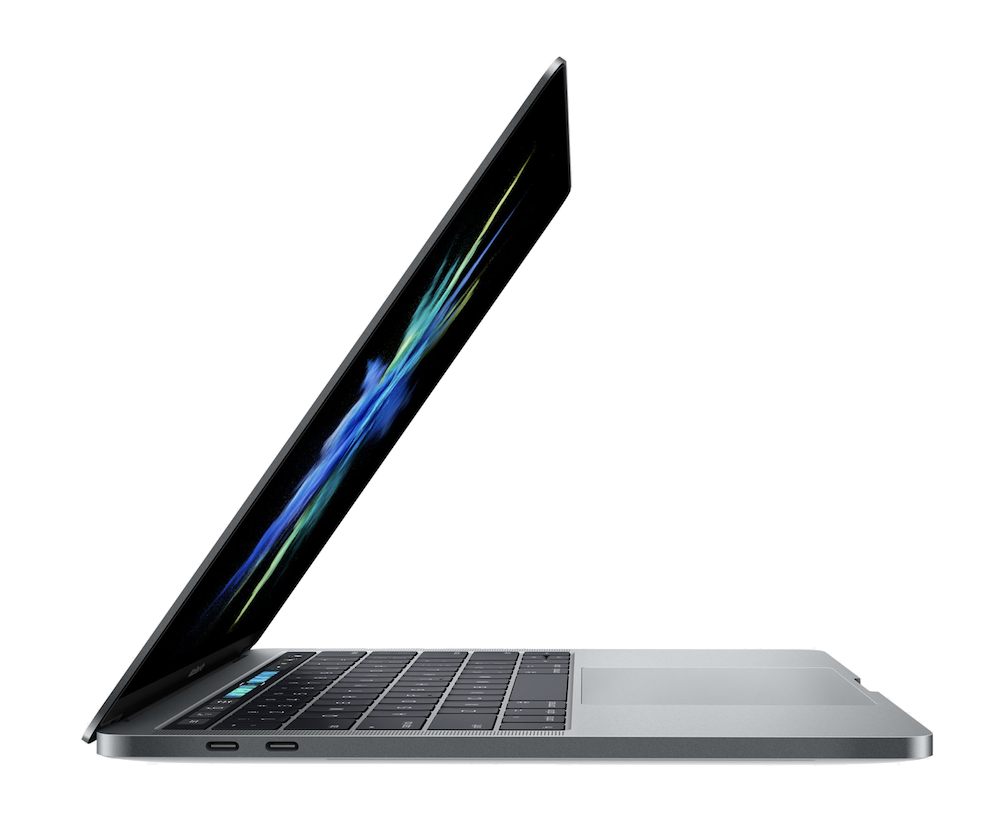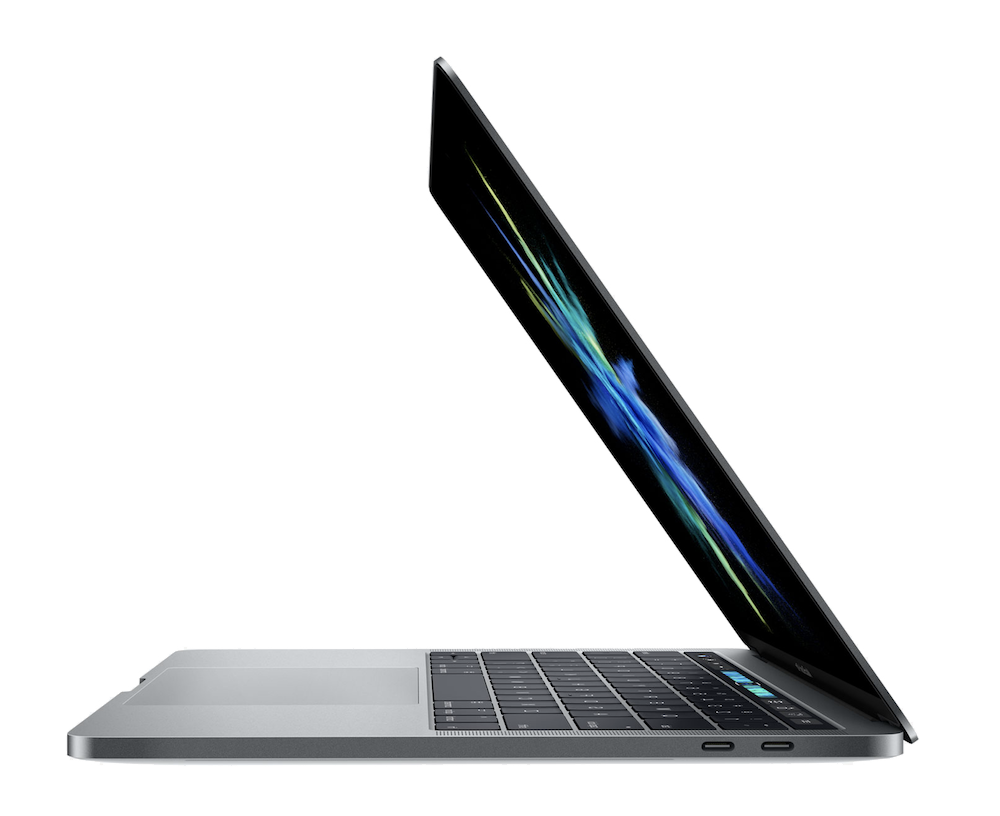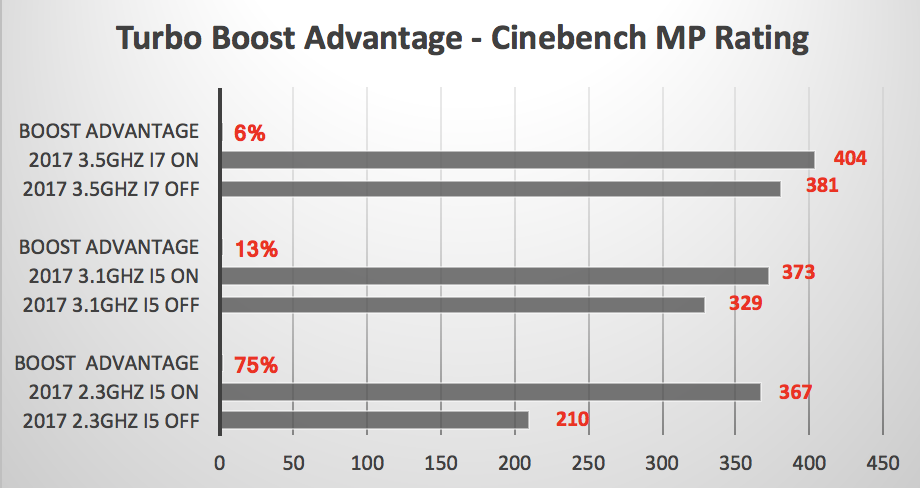How Much Boost Does Turbo Boost Provide?
Posted September 13th, 2017 by rob-ART morgan, mad scientist
At the end of a recent article, we mentioned that one possible reason for low level MacBook Pro nibbling at the heels of the mid level MacBook Pro was that when both are running in Turbo Boost mode, the CPU core frequency is very similar. Our hypothesis is that when Turbo Boost is disabled, the performance gap will grow.
To test this hypothesis, we ran the Cinebench MP CPU test with and without Turbo Boost enabled*. We chose Cinebench because it forces all available CPU cores to be involved in rendering the 3D model. The core clock frequency is pegged during the rendering.


GPU GRAPH LEGEND
2017 3.5GHz i7 = 2017 MacBook Pro Retina 13-inch, 3.5GHz Dual-Core i7 processor (Turbo Boost 4.0GHz), Intel Iris Plus Graphics 650 GPU, 16G of 2133 MHz LPDDR3 memory, Four TB3 ports, Touch Bar
2017 3.1GHz i5 = 2017 MacBook Pro Retina 13-inch, 3.1GHz Dual-Core i5 processor (Turbo Boost 3.5GHz), Intel Iris Plus Graphics 650 GPU, 8G of 2133MHz LPDDR3 memory, Four TB3 ports, Touch Bar
2017 2.3GHz i5 = 2017 MacBook Pro Retina 13-inch, 2.3GHz Dual-Core i5 processor, (Turbo Boost 3.6GHz) Intel Iris Plus Graphics 640, 8G of 2133MHz LPDDR3 memory, Two TB3 ports, NON Touch Bar
(* Turbo Boost can be switched off with a utility called Turbo Boost Switcher. Current CPU core clock frequency can be monitored (and graphed) using Intel Power Gadget.)
CINEBENCH MULTI-CORE CPU TEST
This test makes use of various algorithms to stress all available processor cores (real and virtual). We ran the test with and without Turbo Boost enabled.
(HIGHEST Score = FASTEST)

WHAT DID WE LEARN?
As we suspected, disabling Turbo Boost on the low-end 2.3GHz Core i5 MacBook Pro caused a huge drop in performance compared to the other two 13-inch models. With the Turbo Boost enabled, the 3.1GHz Core i5 model was only 2% faster. With Turbo Boost DISabled, the 3.1GHz Core i5 model was 57% faster than the 2.3GHz Core i5.
Intel's Turbo Boost Technology allows the processor cores to run faster than the rated operating frequency -- UNLESS they begin to operate ABOVE the power, current, and temperature specification limits. The harder and longer your MacBook Pro works on a demanding task (or multiple demanding tasks), the more likely it is to throttle down to the rated core frequency -- or even LOWER if necessary.
So when you are deciding which MacBook Pro to buy, you need to take the above demonstration into consideration. There is a reason the low-end model of MacBook Pro (or iMac) costs less. When push comes to shove, they will run much slower than the faster rated, higher priced models.
Comments? Suggestions? Feel free to email me,
Follow me on Twitter @barefeats
WHERE TO BUY MACS, iPADs, and OTHER APPLE products:
USA readers can help us earn a commission by using this Apple Store USA link or by clicking on any Apple display ad.
Live outside the USA? No problem. We are affiliated with these Apple Stores: